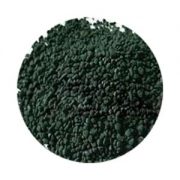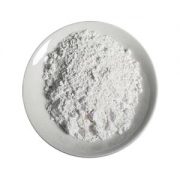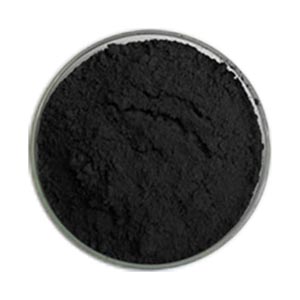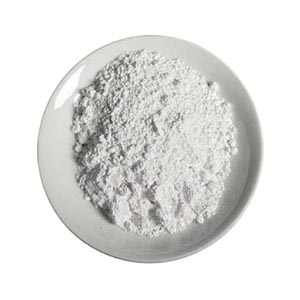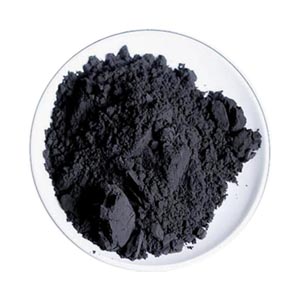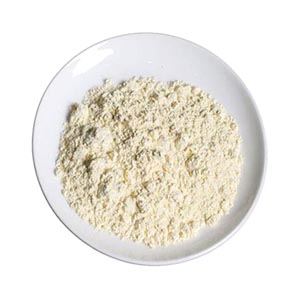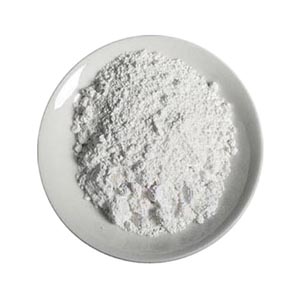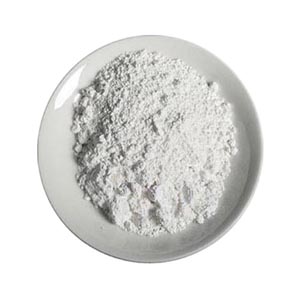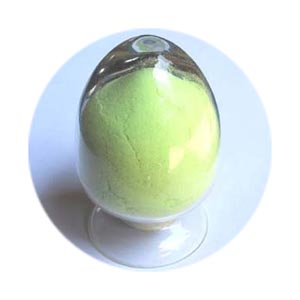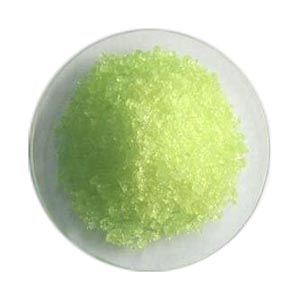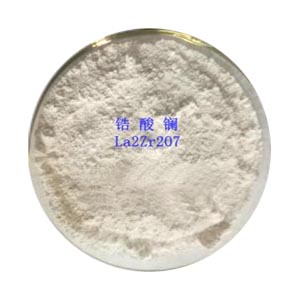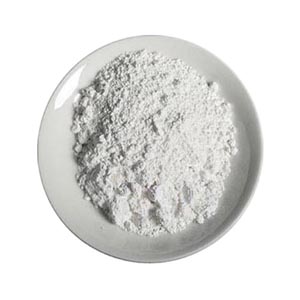
Lanthanum metaphosphate
Laser glass material additive
English name: Lanthanum metaphosphate
Chemical formula: La (PO3) 3
- 描述
- Related Information
- Inquiry
Quality Standard:
Purity (wt%): greater than 99%
Iron (Fe): 3-5PPM
Copper, cobalt, manganese, nickel, chromium, vanadium, titanium are less than 1PPM.
Packing: specific.
Uses: rare earth doped glass additives are mainly used in laser glass, glass fiber, low dispersion glass additives
***************** Related Articles *****************
Preparation and Properties of Rare Earth - doped Lanthanum Triphenyl Phosphate and Pyrophosphate Luminescent Materials
Rare earth phosphates because of its special physical and chemical properties can be used as a good substrate for luminescent materials, but rare earth orthophosphate luminescent materials relatively low luminous efficiency and high cost constraints of its application. The rare earth polyphosphates have potential applications in the fields of illumination and display because of their relatively low cost of raw materials and their ability to be used as high concentration doping substrates. To this end, the development of rare earth polyphosphate luminescent materials technology, to explore its preparation conditions and the relationship between luminescent properties, in order to achieve the application of rare earth polyphosphate luminescent materials is of great significance. In this paper, La P3O9 and M2P2O7 (M = Sr, Mg, Ba) luminescent materials were used as the research object. X-ray diffraction (XRD) and Fourier transform infrared spectroscopy (FT-IR) (TG-DTA) and fluorescence spectroscopy (FL) were used to study the phase structure, thermal properties and luminescent properties of the synthesized rare earth polyphosphate samples. Through a lot of research work, and achieved some innovative results. A new technique for preparing Eu3 + doped La P3O9 luminescent materials by polymer network gel method was established. The effects of the calcination temperature, calcination time, reaction system p H, the ratio of phosphorus to rare earth (n (P) / n (La + RE)) on the phase structure and luminescence properties of the product were investigated. It is found that the ratio of calcination temperature to the ratio of phosphorus to rare earth in raw material (n (P) / n (La + RE)) directly affects the phase structure of the product, and the preparation conditions also affect the luminescent properties of the product. The results show that the optimum conditions for the synthesis of Eu3 + doped La P3O9 luminescent materials by polymer network gel method are that the calcination temperature of the reaction system is 850 ° C, the calcination time is 6 h, p H is 6 and n (P) / n (La + Eu) is 3. Under these conditions, the pure orthorhombic La P3O9: Eu3 + crystal can be prepared, which emits Eu3 + characteristic orange-red light under the excitation of ultraviolet light. Eu3 +, Tb3 +, Eu3 + and Tb3 + co-doped, Ce3 + and Tb3 + co-doped La P3O9 luminescent materials were prepared by polymer network gel method. The phase structure and luminescent properties of the samples were studied. The results show that rare earth ion doping does not change the phase structure of La P3O9 obviously in the experimental range. The excitation spectra of La P3O9: Eu3 + samples consist mainly of O2 - Eu3 + charge transfer band and Eu3 + characteristic excitation band, and the charge transfer band absorption is much larger than that of Eu3 +. Under the excitation of ultraviolet light, Eu3 + characteristic orange red light, when the Eu3 + doping concentration of 40% when the sample luminous intensity to the maximum. The excitation spectra of La P3O9: Tb3 + samples are mainly composed of O2 - Tb3 + charge transfer band and Tb3 + characteristic excitation band, and the charge transfer band absorption is much higher than that of Tb3 +. Under the excitation of ultraviolet light, La P3O9: Tb3 + samples emit Tp3 + characteristic green light; it is interesting that the different emission bands of the sample have different critical quenching concentrations, and when Tb3 + doping concentration is higher than 6%, 5D4 to 7Fj (j = 6,5,4,3), and the critical quenching concentration of the emission band between 5D3 and 7Fj (j = 6,5,4) energy levels derived from Tb3 + is 4%. In the La P3O9: Eu3 +, Tb3 + samples, Tb3 + co-doping was observed to improve the characteristic red light emission of Eu3 +, which confirmed the existence of energy transfer from Tb3 + to Eu3 +. In Ce3 + and Tb3 + co-doped La P3O9 The phenomenon of Ce3 + sensitized Tb3 + luminescence is observed, which means that there is energy transfer from Ce3 + to Tb3 + in the co-doped system. The method of preparation of Eu3 + doped La P3O9 luminescent materials by hydrothermal method and polymer flooding method was studied. The effects of hydrothermal temperature, calcination temperature and filling conditions on the structure and properties of the products were studied. influences. The results show that the La P3O9: Eu3 + luminescent material with single phase is difficult to obtain by hydrothermal method. However, when the hydrothermal temperature is 140 ℃ and the calcination temperature is 850 ℃, the filling liquid pH is 13 La P3O9: Eu3 + luminescent material containing trace amounts of LaPO4. At the same time, La P3O9: Eu3 + luminescent materials were prepared by coprecipitation method using Na3P3O9 as the phosphorous source. It was found that the samples prepared with the calcination temperature of 850 ℃ had excellent luminescent properties. In addition, the preparation and properties of La P3O9: Eu3 + luminescent materials were studied by polymer network gel method, hydrothermal assisted polymer network gel and coprecipitation method. It was found that the polymer network It is more suitable for the preparation of La P3O9: Eu3 + luminescent materials with higher purity, smaller particle size and better light-emitting properties. The Sr2P2O7: Eu3 + luminescent materials were successfully synthesized by polymer network gel method, and the influence of the preparation conditions on the phase structure of the samples was studied. The results show that the technological conditions such as calcination temperature, calcination time, system p H and Eu3 + doping concentration have no significant effect on the phase composition of Sr2P2O7: Eu3 +, but have some influence on the luminescent properties of the product The results show that the Sr2P2O7: Eu3 + crystals with pure luminescence properties can be obtained under the conditions of calcination temperature of 900 ℃, calcination time of 6 h and system p H of 6. The results show that the phase structure and luminescence properties of Sr2P2O7: Eu3 + The Sr2P2O7: Eu3 + samples emit orange-red light under the excitation of ultraviolet light, and the emission peak derived from the 5D0 → 7F2 (red light) transition has a relatively strong emission intensity with respect to the emission peak of 5D0 → 7F1 (orange light) When the doping concentration of Eu3 + is higher than 7%, the concentration of Sr2P2O7: Eu3 + luminescent material will be quenched. In addition, the pure phase M2P2O7: Eu3 + (M = Mg, Ba) luminescent materials were synthesized by the polymer network gel method at the calcination temperature of 1000 oC. Under the excitation of ultraviolet light, Ba2P2O7: Eu3 + and Mg2P2O7: Eu3 + luminescent materials emit orange-red light, and the emission peak of 5D0 → 7F1 (orange light) transition peak with respect to 5D0 → 7F2 (red) And the relative doping concentration of Ba2P2O7: Eu3 + and Mg2P2O7: Eu3 + crystals is 5%, and Mg2P2O7: 5% Eu3 + luminescent materials have stronger luminescence intensity than Ba2P2O7: 5% Eu3 + luminescent materials.
Keywords: polymer network gel method rare earth doped LaP3O9 pyrophosphate phase structure luminescence properties
相关产品
-
Lanthanum Strontium Manganite
Lanthanum Strontium Manganite powder
Manganese acid strontium lanthanum
Molecular formula: La1-xSrxMnO3-d
Usage: Solid fuel battery target material, catalyst target materials, superconducting substrate, the semiconductor material.
Origin: China
-
Ytterbium acetylacetonate hydrate
Other name: Ytterbium 2,4-pentanedionate, Ytterbium(III) acetylacetonate hydrate;
CAS no. : 14284-98-1
EINECS no. : 238-198-8
Molecular formula: C15H21O6Yb.
Molecular weight: 470.3636.
-
Nano Praseodymium oxide
Other name: Dipraseodymium trioxide; Praseodymium sesquioxide; Praseodymium(III) oxide
CAS no. : 12036-32-7; 11113-81-8; 12037-29-5
EINECS no. : 234-845-3
Molecular formula: o 3 r2
Molecular weight: 329.8135
-
Thuliium acetylacetonate trihydrate
Other name: THULIUM 2,4-PENTANEDIONATE, TRIHYDRATE, THULIUM (III) ACETYLACETONATE TRIHYDRATE; Thuliiumacetylacetonate
CAS no. : 14589-44-7
Molecular formula: C15H21O6Tm
Molecular weight: 466.2578
Melting point: 121-123℃
-
Holmium Oxide nanoparticles
Other name: Holmium(III) oxide
CAS no. : 12055-62-8; 39455-61-3
EINECS no. : 235-015-3
Molecular formula: Ho2O3
Molecular weight: 377.8588
Melting point: 2330 ℃
-
Terbium metaphosphate
Laser glass additive Terbium metaphosphate
English name: Terbium metaphosphate
Chemical formula: Tb (PO3) 3
-
Lutetium fluoride
Other name: Lutetium Fluoride Anhydrous,Lutetium trifluoride,Lutetium(III) fluoride
Chemical formula: LuF3
CAS: 13760-81-1
EINECS: 237-355-8
Melting point: 1182 ℃
Boiling point: 2200 ℃
Density: 8.33 g/mlDescription: white powder, no crystal water. Insoluble in water, hydrochloric acid, nitric acid and sulfuric acid, but soluble in perchloric acid.
-
Praseodymium fluoride
Other name: Praseodymium trifluoride
CAS no. : 13709-46-1
EINECS no. : 237-254-9
Formula: F3Pr.
Molecular weight: 197.9029
-
Anhydrous Praseodymium Chloride
Other name: Praseodymium chloride ; Praseodymium trichloride; Praseodymium(III) chloride
CAS no. : 10361-79-2
EINECS no. : 233-794-4
Molecular formula: Cl3Pr
Molecular weight: 247.2666
Melting point : 786 ℃
Boiling point 1700℃
Solubility in water
Dense degree of 4.02 g/cm3
Flash point 1700℃
The vapor pressure: 33900 MMHG at 25°C
Hazard description : stimulation
-
Lanthanum zirconate
Purity: 2N, 3N
CAS no. : 12031-48-0
Molecular formula: La2O9Zr3
Molecular weight: 695.46Widely used in microelectronics, catalysts, ferroelectric materials, / lithium batteries, semiconductors and other electronic fields.

